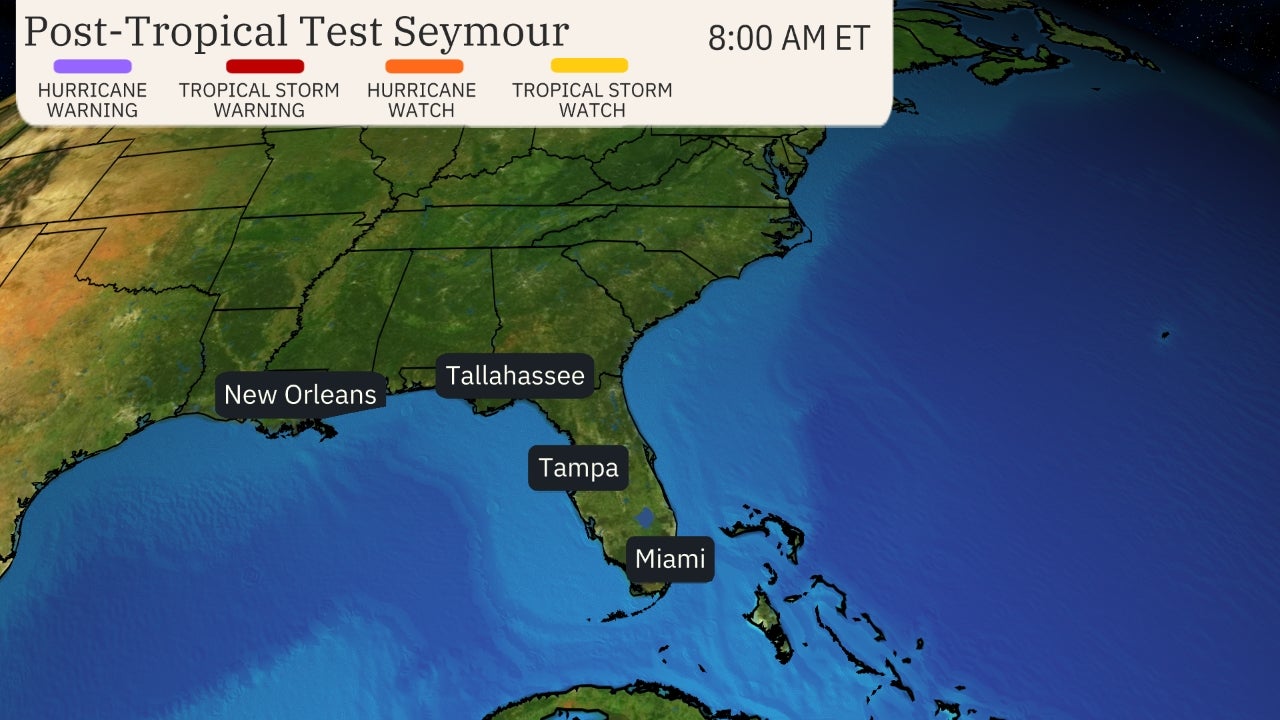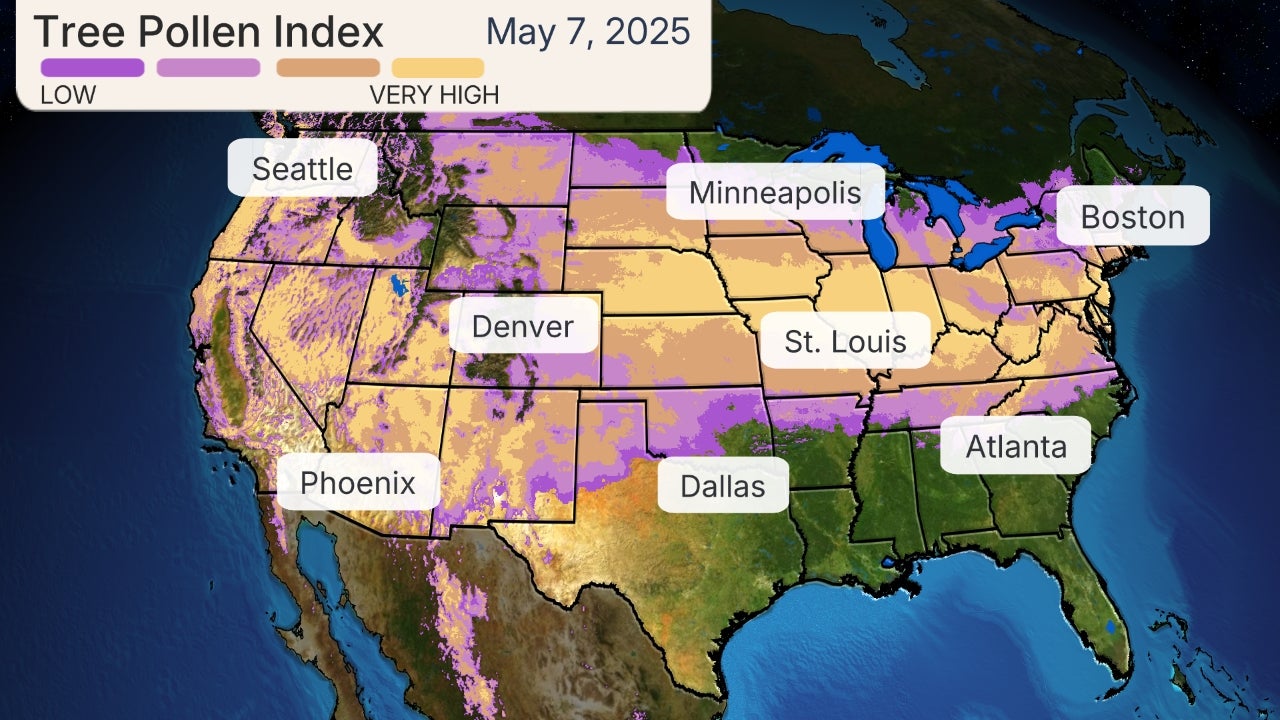weather.com meteorologists
Hurricane Delta is expected to bring damaging winds and rainfall flooding to parts of Louisiana and Mississippi as it moves inland through the weekend. This includes some of the same areas that were ravaged by Hurricane Laura.
Delta made landfall near Creole, Louisiana, a town 14 miles east of Cameron, where Laura made landfall just over 40 days ago, as a Category 2 hurricane with winds of 100 mph earlier this evening.
Delta's landfall was the record 10th landfalling hurricane or tropical storm in the U.S. this season, which breaks the previous record of nine such landfalls in a season that had stood since 1916.
Happening Now
Delta is now a Category 1 hurricane located 20 miles east-northeast of Lake Charles, and will continue to weaken over the next couple of days.
Hurricane Delta's worst weather is moving into central Louisiana now as the eyewall continues inland.
A FLASH FLOOD EMERGENCY has been issued for eastern Calcasieu, western Jefferson Davis and southern Allen parishes, where 4 to 10 inches of rain has already fallen. A rain gauge near Iowa, Louisiana is reporting more than 16.50 inches of rainfall so far.
Lake Charles, Louisiana, which is included in this flash flood emergency, has received more than 9 inches of rain so far.
Rainbands from Delta continue to spread inland and conditions are deteriorating in northern Louisiana.
 Current Radar, Watches and Warnings
Current Radar, Watches and WarningsWater levels are rising along parts of the Louisiana coast and will continue to rise into Friday night. The water level at the Freshwater Canal Locks has risen to over 8.3 feet, breaking the record for the location dating back to Hurricane Ike in 2008. Coastal flooding was reported Friday morning in Nueces County, Texas and has been reported as far east as southeastern Louisiana, Friday afternoon.
Other significant storm surge readings include:
- 5.52 feet in Calcasieu Pass, Louisiana
- 5.05 feet in Sabine Pass, Texas
- 1.46 feet in Lake Charles, Louisiana
- 0.94 feet in Port Fourchon, Louisiana
Maximum sustained winds are now on the decrease as Delta moves inland.
The highest wind gust so far is 101 mph at Texas Point, near the Texas/Louisiana border on the Gulf of Mexico.
Here are a few other significant wind gusts from this evening:
- 96 mph in Lake Arthur, Louisiana (WeatherFlow station)
- 95 mph in Lake Charles, Louisiana
- 89 mph in Calcasieu Pass and Cameron, Louisiana
- 86 mph in New Iberia, Louisiana
- 78 mph in Port Arthur, Texas and Marsh Island, Louisiana
- 75 mph in Lafayette, Louisiana
- 74 mph in Pecan Island, Louisiana
- 48 mph in New Orleans
Hurricane-force winds extend outward up to 40 miles from the center and tropical-storm-force winds extend up to 160 miles from Delta's center.
 Current Winds
Current WindsCurrent Watches and Warnings
A hurricane warning is in effect from High Island, Texas, to Morgan City, Louisiana, including Lake Charles and Lafayette, Louisiana; and Port Arthur, Texas. This means hurricane conditions are expected Friday.
 Watches and Warnings
Watches and WarningsA storm surge warning is also in effect from the Texas/Louisiana border to the Pearl River, Louisiana, including Calcasieu Lake, Vermilion Bay and Lake Borgne.
(NEWS: Where Delta Evacuations Have Been Issued)
Tropical storm warnings are in effect from San Luis Pass to west of High Island, Texas, and from east of Morgan City, Louisiana, to the mouth of the Pearl River, including New Orleans. This means tropical-storm-force winds are expected, in this case within 24 hours.
Forecast Timing, Intensity
Delta is now moving inland over Louisiana and will move across the lower Mississippi Valley this weekend and will weaken quickly.
 Latest Information
Latest InformationForecast Impacts
Winds
Tropical storm-force winds have arrived in the hurricane warning area along the northern Gulf Coast. Hurricane conditions (winds 74 mph or greater) are expected in this area within the next few hours.
 Wind Gust Forecast
Wind Gust ForecastThe strongest winds with Delta will be near the southwest and south-central Louisiana and extreme upper Texas coasts at landfall as the eyewall moves inland. This is where structural damage, power outages and downed trees will be most widespread and severe.
Southwest Louisiana is particularly vulnerable to strong winds because of the damage Laura already caused there in August.
(MORE: Hurricane Delta Puts Hurricane Laura Recovery on Hold in Louisiana)
As with most hurricanes, strong winds capable of downing trees and power outages will also extend inland as Delta gains some forward speed near and after landfall, into much of Louisiana, extreme eastern Texas, Mississippi and southern Arkansas late Friday into Saturday.
 Power Outage Potential
Power Outage PotentialFlooding Rainfall
A faster forward speed than what we saw with Hurricane Sally last month will lessen Delta's extreme rainfall potential to some degree, though heavy rainfall is still expected, particularly along and to the east of its path.
As mentioned earlier, this heavy rainfall combined with storm surge could worsen and prolong flooding for a time along the northern Gulf Coast.
According to the National Hurricane Center, 5 to 10 inches, with isolated 15-inch amounts are expected with Delta in southwest and central Louisiana. This rainfall could cause flash flooding and minor to locally major river flooding.
Rainfall totals of 3 to 6 inches, with isolated 10-inch amounts are forecast in parts of extreme eastern Texas, northern Louisiana, southern Arkansas and western Mississippi.
Some locally heavy rainfall will also spread into the Ohio Valley, Southeast and mid-Atlantic this weekend.
 Rainfall Potential
Rainfall PotentialStorm Surge, Waves
The highest storm surge was expected in parts of south-central Louisiana, not just near the immediate Gulf Coast, but also in bays, inlets and to some degree inland along rivers and bayous. Inundation reached more than 7 feet above normally dry ground in these areas.
In some of these areas, flooding may take days to recede, not just from storm surge, but also from rain-swollen rivers and bayous temporarily backed up unable to drain effectively to the Gulf.
Tornadoes
As with most landfalling hurricanes and tropical storms, there's also a threat of isolated tornadoes from Delta.
Southeast Louisiana and southern Mississippi have the greatest chance of seeing a few tornadoes through Friday night, mainly in outer rainbands where rotating thunderstorms typically occur in tropical cyclones moving inland.
Some isolated tornadoes are also possible Saturday with the remnant of Delta in parts of Mississippi, Alabama and the western Florida Panhandle.
 Thunderstorm Outlook
Thunderstorm OutlookHistorical Notables
Delta's landfall was the record 10th landfalling hurricane or tropical storm in the U.S. this season, which breaks the previous record of nine such landfalls in a season that had stood since 1916.
Delta was the first hurricane with a greek name to make landfall in the United States.
It will also be the fourth Louisiana landfalling storm of 2020, tying 2002 for the record most in any season in the Pelican State, according to Phil Klotzbach, Colorado State University tropical scientist.
And it will be the first time in 134 years that two hurricanes impacted western Louisiana in the same year, according to University of Miami tropical scientist Brian McNoldy.
It's also an unusually strong hurricane so late in the season so far north and west in the Gulf of Mexico, as NHC senior hurricane specialist Eric Blake noted.
Storm History
Tropical Depression Twenty-Six formed late Sunday evening to the south of Jamaica and then strengthened into Tropical Storm Delta on Monday morning, the 25th named storm of the 2020 Atlantic hurricane season.
(MORE: Countdown to a Record Season)

Delta became the ninth hurricane of the 2020 Atlantic hurricane season on Monday evening.
Reconnaissance aircraft measured a drop in central pressure of 18 millibars from Monday's 2 p.m. EDT National Hurricane Center pressure estimate to when it was found to have become a hurricane about six hours later.
Winds in Delta increased by 85 mph in the 24 hours ending 11:20 a.m. EDT Tuesday. That was more than double the criteria for the rapid intensification of a tropical cyclone, which is a wind speed increase of at least 35 mph in 24 hours or less.
Delta's rapid intensification was due to an environment of the highest ocean heat content anywhere in the tropical Atlantic basin, low wind shear and sufficiently moist air, in a region notorious for rapid intensification in October, according to Sam Lillo, a NOAA scientist based in Boulder, Colorado.
Delta's tiny size also helped it intensify so rapidly.
(MORE: Delta Was the Fastest on Record to Intensify From Tropical Depression to Category 4)
Delta made landfall Wednesday morning around 5:30 a.m. CDT near Puerto Morelos, Mexico, in the Yucatan Peninsula, with maximum sustained winds of 110 mph, making it a Category 2 hurricane.
 Delta's Landfall In Mexico
Delta's Landfall In MexicoA wind gust to 75 mph was measured at Puerto Morelos, 64 mph in Cozumel and 106 mph on an elevated WeatherFlow observing site near Cancún.
(NEWS: Power Out, Trees Downed as Delta Strikes Yucatan)
Delta's weakening prior to its Yucatan landfall appeared to be due to land interaction, some modest wind shear impinging on the hurricane from the east, inhibiting its outflow aloft, and also perhaps some dry air working into the tiny circulation.
The maximum sustained winds in Delta topped out at 145 mph Tuesday, but were down to 85 mph as of Wednesday 4 p.m. CDT soon after emerging over the Gulf of Mexico.
Strengthening resumed as it tracked through the Gulf of Mexico.
For the first time in Delta's lifetime as a hurricane, a distinct eye finally cleared out in Infrared satellite imagery Thursday afternoon, and a U.S. Air Force Reserve Hurricane Hunter mission measured flight-level winds strong enough to warrant an upgrade to Category 3 status.

The Weather Company’s primary journalistic mission is to report on breaking weather news, the environment and the importance of science to our lives. This story does not necessarily represent the position of our parent company, IBM.
The Weather Company’s primary journalistic mission is to report on breaking weather news, the environment and the importance of science to our lives. This story does not necessarily represent the position of our parent company, IBM.

No comments:
Post a Comment